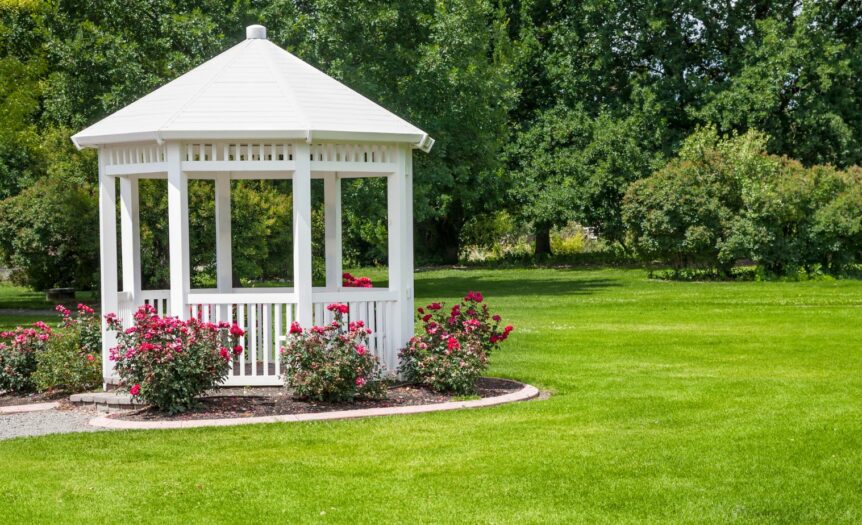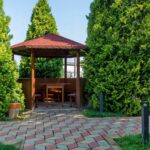Timber Frame Gazebo
When it comes to creating a beautiful outdoor space, a timber frame gazebo can be an excellent addition. With its timeless charm and sturdy construction, a timber frame gazebo provides both aesthetic appeal and functional benefits. Whether you’re looking for a quiet retreat in your backyard or a gathering place for friends and family, a timber frame gazebo offers the perfect solution.
One of the key advantages of a timber frame gazebo is its durability. Constructed using traditional joinery techniques, these gazebos are built to last. The solid wood beams and posts provide exceptional strength, ensuring that your gazebo will withstand the test of time and weather conditions.
In addition to their durability, timber frame gazebos are also highly customizable. You have the flexibility to choose from various designs, sizes, and finishes to suit your specific preferences. Whether you prefer a rustic look or a more modern style, there’s a timber frame gazebo that can complement your outdoor space beautifully.
Overall, investing in a timber frame gazebo is not only an investment in enhancing the visual appeal of your outdoor area but also in creating an inviting space where you can relax and entertain guests for years to come.
Factors to Consider When Selecting Timber for Your Gazebo
When it comes to choosing the right timber for your gazebo, there are several factors you should consider. Each factor plays a crucial role in determining the overall quality and longevity of your structure. Let’s take a closer look at these important considerations:
- Climate and Weather Conditions: The climate in your area will heavily influence the choice of timber for your gazebo. If you live in a region with high humidity or frequent rain, opt for a timber species that is naturally resistant to moisture and rot, such as cedar or redwood. On the other hand, if you reside in an area with extreme temperature variations or strong winds, selecting a more durable hardwood like oak or teak might be preferable.
- Maintenance Requirements: Another aspect to keep in mind is how much time and effort you’re willing to invest in maintaining your gazebo. Some types of timber require regular sealing, staining, or painting to protect them from UV rays and moisture damage. Softwoods like pine may necessitate more maintenance compared to hardwoods like mahogany or ipe, which tend to be naturally insect-resistant and have higher levels of durability.
- Aesthetics: The visual appeal of your gazebo is undoubtedly important as well. Different timbers possess unique grain patterns, colors, and textures that can significantly enhance the overall appearance of your outdoor space. Consider whether you prefer a rustic charm provided by rough-hewn beams or a sleek modern look achieved through smooth finishes.

Different Types of Timber Suitable for Gazebo Construction
Now that we’ve discussed some key factors influencing timber selection let’s explore various types of timber commonly used for gazebo construction:
- Cedar: Known for its natural resistance against decay and insects, cedar is a popular choice among homeowners seeking both durability and beauty. Its distinct reddish-brown color and pleasant aroma make it an appealing option for those looking to create a warm and inviting outdoor living space.
- Redwood: With its rich, reddish hues, redwood is highly regarded for its natural resistance to moisture and decay. It is also known for being lightweight, making it easier to handle during construction. Redwood’s durability combined with its striking appearance makes it an excellent choice for gazebo projects.
- Oak: Oak timber is renowned for its strength and durability, making it suitable for gazebos that need to withstand heavy loads or harsh weather conditions. While oak requires regular maintenance to prevent rotting if left untreated, its exceptional longevity makes it a worthwhile investment in terms of structural integrity.
Understanding the Strength and Durability of Various Timber Species
When evaluating the strength and durability of different timber species, there are specific characteristics you should consider:
- Density: Generally speaking, denser timbers tend to be stronger and more resistant to wear and tear. Hardwoods like teak or ipe have higher density levels compared to softwoods like pine or spruce.
- Natural Oils: Some timber species contain natural oils that act as a protective barrier against insects, decay, and weathering. Teak is one such example known for its high oil content, providing excellent resistance against rotting.
- Treatment Options: Keep in mind that while certain types of timber may not possess inherent qualities like natural resistance to insects or decay, they can still be treated with preservatives or finishes to enhance their lifespan significantly.
By considering factors such as climate, maintenance requirements, aesthetics, as well as exploring different types of timber suitable for gazebo construction along with their strengths and durability aspects; you’ll be able to make an informed decision when selecting the right timber for your gazebo project.








